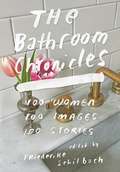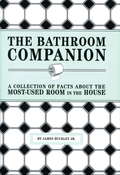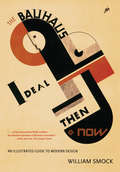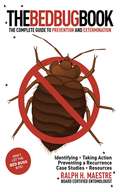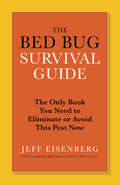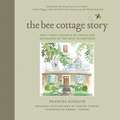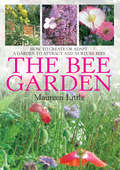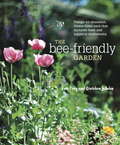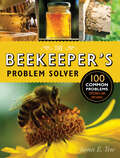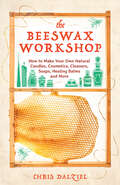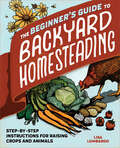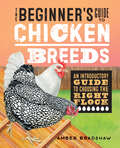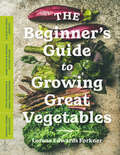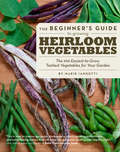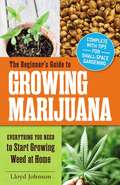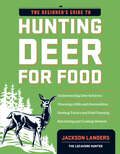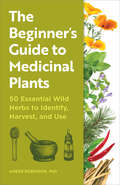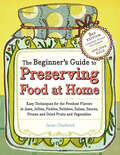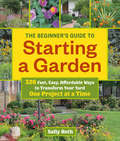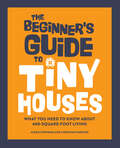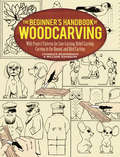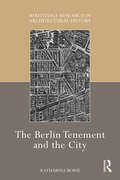- Table View
- List View
The Bathroom Chronicles: 100 Women. 100 Images. 100 Stories.
by Friederike SchilbachOne hundred creative, intelligent, and interesting women--some well-known, some not--reveal their inner selves through candid, tender, and often humorous snapshots--both visual and textual--of a single object or corner of their bathroom. For many women, the bathroom is the most intimate of spaces. It is the place where we encounter ourselves in the mirror each morning and every night-brushing our teeth, applying make-up, fixing our hair, getting ready to face the day, or recede from it. THE BATHROOM CHRONICLES is a beautiful, chic, touching, and deeply feminine collection of photos and accompanying short stories (sometimes no more than a sentence or two) by women about their private spaces and most cherished possessions. Lena Dunham reveals the corner by the sink where she keeps her favorite pieces of jewelry, as well as her birth control. Erica Jong snaps her poodles and insists that they love her powder room and to "fluff up their hair" in front of the mirrors. Roz Chast reflects on a shelf in the corner that she purchased from a second-hand store. It's decorated with birds, because she loves birds, and a tiny emu that was given to her by a friend when she was in Australia. Like the bathrooms themselves each of these stories and images is unique--open, private, minimalistic, messy, and beautiful.
The Bathroom Companion
by James BuckleyIt's the most used room in the house--but how much do you know about it? Here's the first book about the bathroom written exclusively for the bathroom! Set it on the back of the tank and learn something new on every visit--amazing facts and figures from history, science, pop-culture, and more. Don't let you time in the bathroom be a waste!
The Bathroom: A Social History of Cleanliness and the Body (History of Human Spaces)
by Alison K. HoaglandThe Bathroom: A Social History of Cleanliness and the Body is the first scholarly treatment of the American bathroom--as a space in the house, through nearly two centuries. After a brief nod to precedents set by other countries and to elements of the bathroom that may be placed in different parts of the house, this book traces the development of the bathroom in the American house since the Civil War, when the bathroom began to take shape. <p><p> The bathroom is considered in light of many socially relevant themes, such as cleanliness, sanitation, technology, and consumerism. Taken as a whole, the book bridges the gap between the public and private infrastructure of the bathroom and reveals the ways in which the space transforms its occupants into consumers. Its language is jargon-free, making it ideal for students, general readers, and researchers.
The Bauhaus Ideal Then and Now: An Illustrated Guide to Modern Design
by William SmockThe Bauhaus Ideal is both a picture book and a guidebook to the fascinating and enduring legacy of modernist design, and to the continuing influence of Bauhaus on interior design—not just on architecture, but also on furniture, glassware, tableware, and kitchen utensils: the whole range of domestic arts.This unique volume introduces modern design principles and examines them from an historically critical perspective. It concludes with some ideas for melding modern solemnity with postmodern irony. And in each phase the illustrations speak as eloquently as the text—the whole serves as a beautifully illustrated design memo.
The Beautiful Edible Garden: Design A Stylish Outdoor Space Using Vegetables, Fruits, and Herbs
by Stefani Bittner Leslie BennettFrom the founders of landscape design firm Star Apple Edible & Fine Gardening in the San Francisco Bay Area comes a stylish, beautifully-photographed guide to artfully incorporating organic vegetables, fruits, and herbs into an attractive modern garden design.We've all seen the vegetable garden overflowing with corn, tomatoes, and zucchini that looks good for a short time, but then quickly turns straggly and unattractive (usually right before friends show up for a backyard barbecue). If you want to grow food but you don't want your yard to look like a farm, what can you do? The Beautiful Edible Garden shares how to not only grow organic fruits and vegetables, but also make your garden a place of year-round beauty that is appealing, enjoyable, and fits your personal style. Written by a landscape design team that specializes in artfully blending edibles and ornamentals together, The Beautiful Edible Garden shows that it's possible for gardeners of all levels to reap the best of both worlds. Featuring a fresh approach to garden design, glorious photographs, and ideas for a range of spaces--from large yards to tiny patios--this guide is perfect for anyone who wants a gorgeous and productive garden.
The Bed Bug Book: The Complete Guide to Prevention and Extermination
by Ralph H. MaestreThe definitive handbook on the detection, treatment, and prevention of bed bugs--a must have guide for every homeowner, renter, landlord, and traveler.Bed bugs were believed to have been eradicated by DDT and organophosphates in the 1950s, but they are now reaching epidemic levels. Some cities have seen a 1000% increase in bed bug infestations. Exterminators were unprepared for the resurgence of these tiny pests and the public is now scrambling for information on how they spread and how to get rid of them. The Bed Bug Book has the answers. A professional pest control manager and bed bug expert with over twenty-five years in the industry details: The complete history of bed bugs The biology of bed bugs--their life cycles with photos of each stage of growthA guide to prevention--what to look for when you're traveling and steps you can take to protect your home A guide to detectionA guide to treatments--dusts, liquids, steam, etc., and how to choose the best solution for you and your loved onesHow to choose a pest management company--what to expect and what it will cost 10 case studies from the author's own experience with clients who had bed bugs104 essential things to know about bed bugsExtensive references to help you choose a pest control company, know your rights as a tenant or landlord, and suggestions for further reading Based on years of first-hand experience, Ralph H. Maestre tells you how to spot bed bugs in your home, hotel, or on the go, how to identify a bed bug bite, and most importantly, the steps you must take to get rid of these pests. Includes 104 essential things to know about bed bugs, handy tips for travelers, advice on buying vintage and second hand goods, what to expect when the exterminators come, and how to protect yourself against future infestations. Includes green methods and environmentally-friendly solutions. Remember, bed bugs can affect anyone-from newborns to the elderly, everyone is at risk. So don't let the bed bugs bite! Spot them early, take action, and get on with your life.
The Bed Bug Survival Guide: The Only Book You Need to Eliminate or Avoid This Pest Now
by Jeff EisenbergThe 5 year old who carried them home in his backpack thta he grabbed from the communal pile at school...The young assistant who got them from her new work cubicle...the executive who got them on an overseas flight...It can no longer be denied that the city, the country and the world are in the grips of this epidemic. Jeff Eisenberg and his NYC-based company Pest Away have successfully treated more than 100,000 spaces for bed bugs over the past 15 years. He's the go-to guy for businesses, celebs, and the media--and in THE BED BUG SURVIVAL GUIDE he shares his best strategies, advice and tips for treating and preventing bed bug infestation once and for all.With Eisenberg's advice, readers can lower thier risk of bed bug infestation by up to 60%! Or, if they have them they can be sure they are using the right method to get rid of them. The book is divided into ten user-friendly chapters that cover everything, including: Prevention--what to do immediately, daily, weekly and monthly Travel--the 5 biggest mistakes made during hotel stays Life--avoiding bed bugs in unexpected places like the gym, the mall, the movie theater, and on airplanes Treatment--Green? Heat? Cryonite? Fumigation of furniture? Exterminators--hiring one who actually knows what to do.
The Bee Cottage Story: How I Made a Muddle of Things and Decorated My Way Back to Happiness
by Frances SchultzInspired by Frances Schultz’s popular House Beautiful magazine series on the makeover of her East Hampton house, Bee Cottage, what began as a decorating book evolved into a memoir combining the best elements of both: beautiful photos and a compelling personal story. Schultz taps into what she learned during her renovations of Bee Cottage--determining how each area in the house and garden would be used and furnished--to unravel the question of how a mature, intelligent, successful woman could have made such a mess of her personal life. As she figures out each room over a period of years, Frances finds a new path in life, also a continual process. She comes to learn that, like decorating a home, our lives must adapt to who we are and what we need at different points along the way. The Bee Cottage Story is part memoir, part home decorating guide. Frances discusses the kinds of useful, commonsense design issues that professionals take for granted and the rest of us just may not think of, prompting the reader to examine and discover her own "truth” in decorating--and in her life.
The Bee Garden: How To Create Or Adapt A Garden To Attract And Nurture Bees
by Maureen LittleBees play a vital and irreplaceable role in pollinating our flowers, fruits and vegetables. The more bees in your garden the healthier, more productive and more pleasant a place it will be. Yet bees are declining rapidly and many people, even if they do not wish to keep bees themselves, are asking what can be done on an individual basis to help the bee. This book is a response to that request. It will demonstrate in one accessible volume how each of us can play our part in providing a bee-friendly environment, no matter how much gardening space and/or time we may have. It includes: * How bees forage, what bees you can expect to find in your garden and what plants are best for them. * Why honey bees are so important; what they need to thrive and how they detect and access those requirements; and what varieties of plants are best suited to provide those needs. * How the gardener can offer and maintain a bee-friendly garden, followed by a season-by-season account of what beefriendly plants are in flower and when, and what jobs the gardener can be doing during these times to help bees thrive. * A gazetteer of selected bee-friendly plants, arranged by type of plant in seasonal sub-sections. * Illustrative, practical planting plans, including a culinary herb garden, a potager, a wild flower garden, and a 3 seasons traditional border.
The Bee Garden: How to Create or Adapt a Garden to Attract and Nurture Bees
by Maureen LittleBees play a vital and irreplaceable role in pollinating our flowers, fruits and vegetables. The more bees in your garden the healthier, more productive and more pleasant a place it will be. Yet bees are declining rapidly and many people, even if they do not wish to keep bees themselves, are asking what can be done on an individual basis to help the bee. This book is a response to that request. It will demonstrate in one accessible volume how each of us can play our part in providing a bee-friendly environment, no matter how much gardening space and/or time we may have. It includes: * How bees forage, what bees you can expect to find in your garden and what plants are best for them. * Why honey bees are so important; what they need to thrive and how they detect and access those requirements; and what varieties of plants are best suited to provide those needs. * How the gardener can offer and maintain a bee-friendly garden, followed by a season-by-season account of what beefriendly plants are in flower and when, and what jobs the gardener can be doing during these times to help bees thrive. * A gazetteer of selected bee-friendly plants, arranged by type of plant in seasonal sub-sections. * Illustrative, practical planting plans, including a culinary herb garden, a potager, a wild flower garden, and a 3 seasons traditional border.
The Bee-Friendly Garden
by Gretchen Lebuhn Kate FreyThis guide to designing a bee garden helps gardeners create a stunningly colorful, vibrant, healthy habitat that attracts both honeybees and native bees. In The Bee-Friendly Garden, award-winning garden designer Kate Frey and bee expert Gretchen LeBuhn provide everything you need to know to create a stunningly colorful, vibrant, safe, healthy garden that helps both the threatened honeybee and native bees. No matter how small or large your space, and regardless of whether you live in the city, suburbs, or country, just a few simple changes to your garden can fight the effects of colony collapse disorder and the worldwide decline in bee population that threatens our global food chain. There are many personal benefits of having a bee garden as well! Bee gardens: · contain a gorgeous variety of flowers · bloom continuously throughout the seasons · are organic, pesticide-free, and ecologically sustainable · develop healthy and fertile soil · attract birds, butterflies, and other beneficial insects · increase the quantity of your fruit and vegetable harvest · improve the quality, flavor, and size of your produce Illustrated with spectacular full-color photos, The Bee-Friendly Garden debunks myths about bees, explains seasonal flower progression, and provides detailed instructions for nest boxes and water features. From "super blooming" flowers to regional plant lists and plants to avoid, The Bee-Friendly Garden is an essential tool for every gardener who cares about the planet and wants to make their yard a welcoming habitat for nature's most productive pollinator.From the Trade Paperback edition.
The Beekeeper's Problem Solver: 100 Common Problems Explored and Explained
by James E. TewAuthor, experienced beekeeper, and apiary expect James E. Tew explains 100 common problems faced by beekeepers, clearly spelling out their underlying causes and how to solve all of them.Beekeeping requires understanding, commitment, and attention to detail. Laying the groundwork for a successful hive is essential, and demands a keen appreciation of critical areas like hive management, breed choice, and health requirements.Bees often disguise problems, though, making recognizing trouble in the crucial, initial stages that much more difficult. Whether you’re a newcomer or an old hand, The Beekeeper’s Problem Solver provides the information you need to nip problems in the bud, or avoid them in the first place.With color photography throughout and a glossary of terms at the back, each beekeeping problem is tackled in depth, covering a wide range of practical tips and useful insights. The problems are conveniently organized into the following categories: ·Beekeeping Basics – My new bees arrived during a cool, rainy period. … ·Beekeeping Equipment – The beehive smoker will not stay lit. … ·Biology and Behavior of the Colony – There are many dead drones at the hive entrance. … ·Managing and Manipulating Hives – The brood nest has been built across multiple boxes. … ·Queen Production and Maintenance – The queen is not a good egg producer. … ·Diseases and Pests of Honey Bees – Varroa mites have overrun the colony. … ·Pollen and Pollination – Too few bees are pollinating the target crop. … ·Producing and Processing Honey – The honey filter keeps getting clogged. … ·Beeswax, Propolis, and Specialty Issues – Propolis is difficult to gather and process. … Don’t lose your hive to something preventable, just grab your problem solver!
The Beeswax Workshop: How to Make Your Own Natural Candles, Cosmetics, Cleaners, Soaps, Healing Balms and More
by Christine J. DalzielOver 100 recipes to transform this miracle ingredient into environmentally friendly household cleaner, personal care products, candles, and more.Making all kinds of amazing, all-natural stuff out of beeswax is easy and fun. Packed with over 100 step-by-step recipes, The Beeswax Workshop shows you how to make beautiful gifts, household cleaners, beauty supplies and so, so much more. Projects in this book include:HOME• Mason Jar Candle• English Furniture PolishHEALTH• Bug-Be-Gone Insect Repellent• Chamomile Sunburn SalveBEAUTY• Everyday Body Butter• Rose Lip GlossGARDEN• Waterproof Shade Hat• Nontoxic Wood SealantWhether you use beeswax from your backyard hive or purchase a supply, this book offers tips, tricks and techniques for getting the most out of this miracle ingredient.
The Beginner's Guide to Backyard Homesteading: Step-by-Step Instructions for Raising Crops and Animals
by Lisa LombardoFarm to table takes on new meaning with this comprehensive beginner's guide to creating a backyard homestead. Learn how to convert your yard into a sustainable and self-reliant space that reduces waste and puts food on your plate. Filled with practical advice and straightforward lessons, you'll soon see how feasible it is to keep poultry or can fruit you've grown. Whether you have a tiny plot or a large estate, The Beginner's Guide to Backyard Homesteading demonstrates that anyone can start living off their land. This homesteading book offers up indispensable tips and tricks, including: Project action plans—Kick-starting your homesteading journey is a breeze with action plans that help you break down necessary materials, project costs, monthly goals, and more. Seasonal timelines—Knowing what to plant and when is crucial to your success. These precise timelines reveal the ideal schedules for everything from starting seedlings to harvesting honey. Exhaustive instructions—Learn how to build the infrastructure you need with easy-to-follow directions. You'll find yourself constructing raised beds and planting fruit trees in no time. Jump into a more sustainable, affordable, and fulfilling lifestyle with The Beginner's Guide to Backyard Homesteading.
The Beginner's Guide to Chicken Breeds: An Introductory Guide to Choosing the Right Flock
by Amber BradshawGrow your flock with practical, breed-specific advice for beginners Deciding to raise chickens is one thing, but figuring out which breeds will suit your needs is another—especially with hundreds of different types! Whether you're raising chickens for eggs, meat, companionship, or show, The Beginner's Guide to Chicken Breeds has all the information you need to get started. This easy-to-use reference book helps you assess your needs and guides you in making the best decisions for beginning or expanding your flock. Get to know top-tier pure breeds and hybrids, optimal egg-layers and broilers, ideal chicken breeds for beginners, and more. For every category of chicken, you'll find an ultimate breed list that highlights the unique qualities and strengths of each, and breaks down the key considerations of owning them. The Beginner's Guide to Chicken Breeds includes: Beginner-friendly guidance—Get started with expert insights, answers to commonly asked questions, lists of pros and cons, and a best-fit questionnaire to help you narrow down the right chicken breeds for you. Cost estimates—Plan for all the expenses associated with raising a backyard flock, including the chicken coop, food, veterinary bills, cleaning products, and other supplies. Chicken characteristics—Explore key breed-specific traits, including average weight and appearance, harvest age, egg production and color, temperament, climate hardiness, and more. Discover everything you need to know to pick the perfect chicken breeds for your lifestyle with this essential beginner's guide.
The Beginner's Guide to Growing Great Vegetables
by Lorene Edwards ForknerYour Backyard Bounty Awaits! You can grow beautiful, healthy, delicious veggies and herbs right from the start—just follow the trustworthy advice found in The Beginner&’s Guide to Growing Great Vegetables. Expert gardener Lorene Edwards Forkner shares all the information you need to create a thriving garden, from facts about soil and sun to tips on fertilizing, mulching, and watering. Regional planting charts show what to plant when, and a month-by-month planner takes you from January through December. Profiles of popular edibles explain exactly how to plant, care for, and harvest your bounty. Whether your garden grows in the ground, on a balcony, or in containers on a sunny patio, this is your guide to grow-your-own success.
The Beginner's Guide to Growing Heirloom Vegetables: The 100 Easiest-to-Grow, Tastiest Vegetables for Your Garden
by Marie IannottiGrowing your own vegetables has never looked, or tasted, so good. Are heirloom vegetables more difficult to grow than conventional hybrids? The Beginner's Guide to Growing Heirloom Vegetables debunks this myth by highlighting the 100 heirloom vegetables that are the easiest to grow and the tastiest to eat.Marie Iannotti makes it simple for beginning gardeners to jump on the heirloom trend by presenting an edited list based on years of gardening trial and error. Her plant criteria is threefold: The 100 plants must be amazing to eat, bring something unique to the table, and—most importantly—they have to be unfussy and easy to grow. Her list includes garden favorites like the meaty and mellow 'Lacinato' Kale, the underused and earthy 'Turkish Orange' Eggplant, and the unexpected sweetness of 'Apollo' Arugula.
The Beginner's Guide to Growing Marijuana: Everything You Need to Start Growing Weed at Home
by Lloyd JohnsonAdvice for growing cannabis at home!Cannabis can be a tricky plant to cultivate, but The Beginner's Guide to Growing Marijuana makes it easy by guiding you through each stage of development to ensure that you always build a thriving garden. Inside, you'll find everything you need to know about growing and harvesting marijuana, from choosing the right herb strain to establishing the perfect soil conditions, light, and temperature for your plants. Featuring illustrations that depict the cannabis's anatomy, you'll also discover the differences among various types of plants, how to tell a male marijuana plant from a female, and what it looks like when it's ready to be harvested. Complete with quick "Money Smart" tips and "Keep It Simple" sections, this one-stop resource shows you how to get the most out of your money and time when you're nurturing your first crop.Filled with plenty of techniques for small-space and container gardening, The Beginner's Guide to Growing Marijuana will help you master the art of growing cannabis--no matter how small your space or budget!
The Beginner's Guide to Hunting Deer for Food
by Jackson LandersHunting deer is the most inexpensive and environmentally friendly way to acquire organic, grass-fed meat. In this thorough primer, perfect for those who’ve never hunted before, Jackson Landers explains how to supplement your food supply with venison taken near your home. From choosing the correct rifle and ammunition to field dressing, butchering, and proper safety measures, Landers takes you through every step of the process and encourages a gentle, practical approach to the psychology and politics of hunting.
The Beginner's Guide to Medicinal Plants: 50 Essential Wild Herbs to Identify, Harvest, and Use
by Amber Robinson PhDCreate healing remedies with nature's help Our planet is home to an abundance of powerful plants that can help you heal gently and naturally. In this beginner's guide, you'll learn how to find, harvest, and prepare some of the most common medicinal plants and use them to create restorative remedies—from a burdock tea for clearer skin to a cayenne pepper salve for better blood flow. Get to know the plants—Discover profiles of 50 essential plants, herbs, and roots, complete with photos and an overview of their unique medicinal properties. Teas, tinctures, and tonics—Put each plant to use with simple recipes for soothing poultices, energizing bath soaks, and so much more. Stay smart and safe—Learn how to properly identify plants, as well as how to use the Universal Edibility Test to check that what you find is safe to consume. Your journey to homemade herbalism starts here.
The Beginner's Guide to Preserving Food at Home: Easy Techniques for the Freshest Flavors in Jams, Jellies, Pickles, Relishes, Salsas, Sauces, and Frozen and Dried Fruits and Vegetables
by Janet ChadwickFreeze, dry, can, root cellar, and brine your favorite produce right at home. Janet Chadwick’s introduction to the world of preserving provides step-by-step instructions and inspiring easy-to-follow recipes. Pick up a crate of inexpensive, less-than-perfect tomatoes at the farmers’ market and turn them into jars of spicy salsa, or buy a few extra peaches and can a delicious batch of jam to serve with Sunday breakfast. You’ll extend the summer harvest and find yourself serving up delicious, locally grown food all year long.
The Beginner's Guide to Starting a Garden: 326 Fast, Easy, Affordable Ways to Transform Your Yard One Project at a Time
by Sally RothA fresh approach and simple way to transform your yard! The prospect of revamping a yard is daunting. Where do you start? How do all the various areas come together in a beautiful, cohesive way? The Beginner’s Guide to Starting a Garden simplifies the process by showing you how to spend fewer hours (and a minimal amount of money) in the garden by tackling one small area at a time. You’ll find garden plans for ten unique areas—the entryway, the shady areas under trees, and more—that can be linked together over time to create a unified yard, and plants that are dependable, easy to find, and look good year after year. You’ll also learn the basics of good design, which plants offer the most bloom for your buck, and how to avoid the most common planting mistakes.
The Beginner's Guide to Tiny Houses: What You Need to Know About 400-Square-Foot Living
by Alexis Stephens Christian ParsonsDiscover why tiny houses are such a big deal Welcome to the tiny house movement! This guide is the ideal introduction for the true beginner. Learn the history of the modern tiny house movement, get a breakdown of tiny house styles, and meet the passionate tiny house community with profiles of pioneers and their tiny homes. The book also discusses the pros and cons of micro living—is a tiny house right for you, right now? Take the self-evaluation quiz in chapter two and find out. Then, dive into the range of tiny house options and must-knows before taking the plunge. Benefits of downsizing—Find out how tiny houses are better for the environment, cheaper to maintain, and even meet housing shortages. Find a match—Fall in love with a tiny house that fits your style—from simple, stationary A-frames to creative tiny houses on wheels (or THOWs), all less than 400 sq ft. More to explore—The comprehensive resource section will help you dig deeper into tiny house construction options, off-grid living, and the art of downsizing. Learn about living large in the tiny house of your dreams!
The Beginner's Handbook of Woodcarving: With Project Patterns for Line Carving, Relief Carving, Carving in the Round, and Bird Carving
by William Johnston Charles Beiderman"An excellent book for all carvers." -- The Mallet"A woodcarver is one who can take a scrap of wood, breathe life into it with patient, skilled hands, and make it a warm object of lasting beauty. That is creativity," say award-winning craftsmen Beiderman and Johnston in this well-organized and highly instructive guidebook that tells you everything you need to know to create attractive woodcarvings.Especially written for the novice, it shows how to produce realistic animals, flowers, and humorous figures in a variety of forms: in the round, in relief, and as line carvings. A wide spectrum of more than 60 project patterns offers practical plans and ideas for carvers at all levels of expertise.The authors provide a detailed yet easy-to-follow introduction to carving tools and how to use them. There are also helpful hints to guide beginning carvers through difficult stages of carving, and expert advice on painting and finishing, woodcarving as gifts, how to exhibit and enter carvings in competition, and much more. You'll even find a whole chapter devoted to carving birds.Abundantly illustrated with over 200 photographs and detailed line drawings, this first paperback edition of The Beginner's Handbook of Woodcarving will be welcomed by any would-be woodcarver seeking a thorough, reliable, and crystal-clear introduction to the age-old art of carving wood.
The Berlin Tenement and the City (Routledge Research in Architectural History)
by Katharina BorsiThe Berlin Tenement and the City describes the development of the Berlin tenement from 1860 to 1914, showing how it became both Berlin’s standard housing type and its principal urban component – the city’s ubiquitous typology. In contrast to earlier historical categorizations of the tenement as a ‘rental barrack,’ here it is described as an evolving typology that dynamically responded to the demands of the city and urban reform.In this dynamic understanding of architecture, the tenement is the protagonist of the actual unfolding of the city, its growth and densification, as well as its spatial and social differentiation. Charting the evolution of the productive tenement into a morphology combining living and manufacturing and the rise of tenements increasingly differentiated according to class traces their contribution to the evolution and generalization of norms of housing and domesticity.This book is essential reading for scholars, students, architects and urbanists interested in Berlin or the history of housing and the city.
